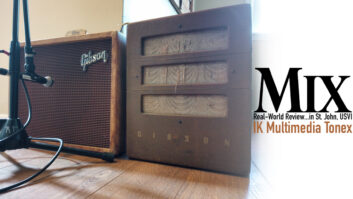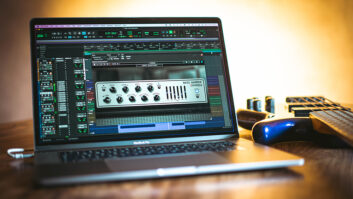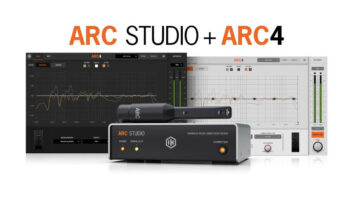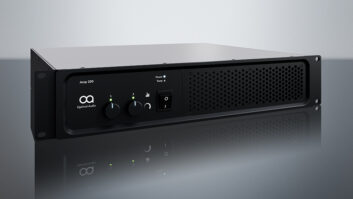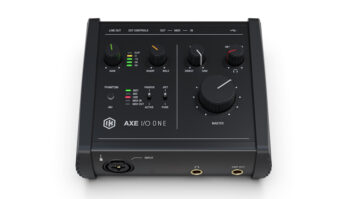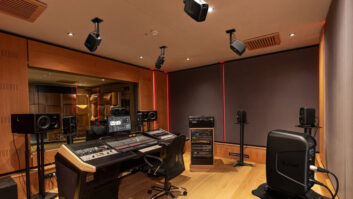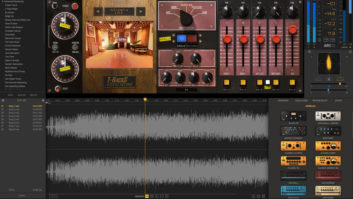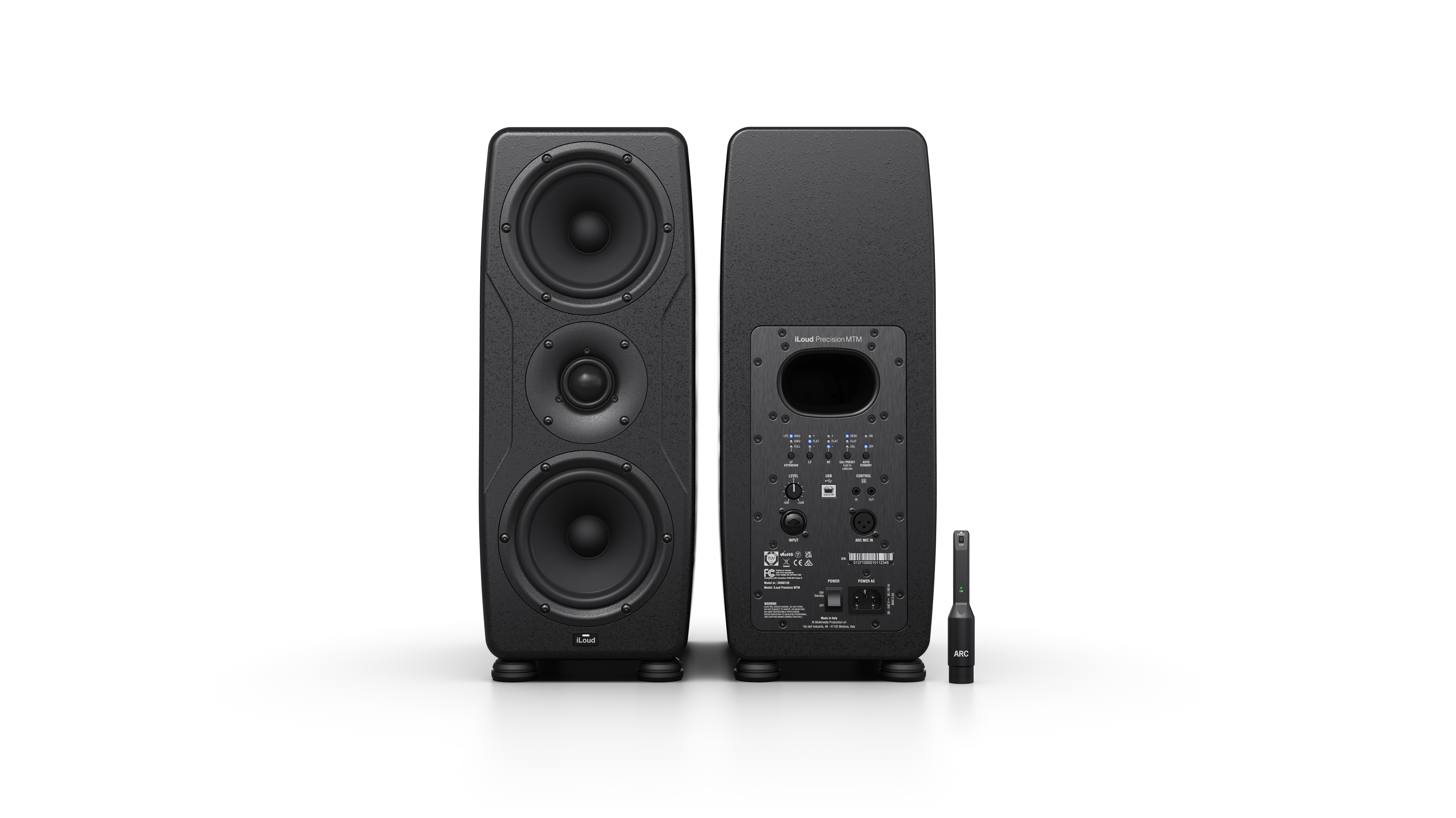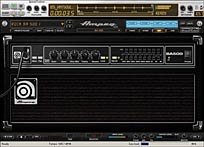
IK Multimedia Ampeg SVX GUI shown with a BA-500 head
IK Multimedia’s Ampeg SVX Bass Amp is a complete virtual bass guitar rig posing as a plug-in. SVX uses the company’s DSM technology to model Ampeg bass guitar-amplification products using a GUI that any bass or guitar player will instantly recognize.
SVX runs at up to 96kHz sample rates as a mono or stereo RTAS, VST or Audio Units plug-in on both Macs and PCs. It installed and worked perfectly in both a Pro Tools HD3 Accel system running on a Mac Quad-Core computer and on a PC with an AMD Athlon 4600 x2 chip running Steinberg Nuendo Version 3.2.
Getting around the interface is facilitated by images of the modeled amps, heads, pedals and speaker cabinets surrounded by a navigation frame. The categories are broken down into Amps and Styles that can be modified, saved and recalled. The amps include models from the BA-500 solid-state to the Portaflex “flip top” with an array of 39 presets of front panel setups for easy auditioning. The Styles section offer 77 presets, including slap, fingered and picked, plus synth bass options that take a performed part into the keyboard realm with sub-octave, envelope and filter options.
CHAIN, CHAIN, CHAIN
The Module Selector window graphically depicts SVX’s virtual signal chain. Arranged in the exact order found on a real-world bass rig are four modules: precision chromatic tuner; a pedal board with six slots and a choice of eight different pedals per slot; the Amp Head module; and the cabinet/microphone section. Each module has a Bypass switch for circumventing it and a Mute button for removing its effect from the mix (if you are mixing in the original direct signal).
There are six cabinet styles available featuring different speaker combinations (4×12-inch, 2×12-inch, etc.). Most have adjustable high-frequency drivers accessible on the rear side of the cabinet that “flips” around whenever you click on the High Level button — cute!
Each speaker cabinet offers a choice of six standard dynamic and condenser mic models from Electro-Voice, Shure, Neumann and more, with on/off-axis and near/far positioning — you’ll hear the concomitant difference in the proximity effect of the cardioid mic models. The ambience level fader adds a synthetic room tone that sounds better in mono than in stereo.
The pedal board gives you overdrive, an octave divider, analog chorus, up to 500 ms of analog delay, a compressor, bass wah with auto-function, a funky envelope filter and volume pedals.
SO MANY CHOICES
It boggles the mind to think of all the possible combinations when configuring SVX, but that’s what makes it fun because you can mix and match pedals and amps to different cabinets — even berserk combinations such as pairing the SVT head with the lowly B-15R cabinet.
While working on a song, I set up my skeptical bassist using a Countryman DI box and a Neve 1272 mic preamp. In Pro Tools, I used an aux track with the SVX instantiated and bused its output to an audio track. SVX has 100 samples of latency in Pro Tools and presented no problems when I recorded through it live.
We settled on a preset under the Fingered style called Bass Sustain, which features the SVT-4 Pro and the BA-500 cab. We changed the mic to the Vintage Dynamic 20 mic, placed in close proximity and on-axis to help cut through the guitars. I didn’t compress going into Pro Tools, leaving that to the amp model. The included stomp compressor left me wishing for an insert path so that I could insert my favorite compressor.
There was a bridge section in the band’s song where the bass player wanted to add chorus and distortion. SVX allows complete dynamic automation of all settings, including those for the pedals. Once the bridge bass part was played once, I worked with the musician to get the desired treatment by inserting SVX on a direct bass track I had also recorded. Afterward, I saved his setup and loaded it into SVX instantiated on the aux recording channel. He went on to perfect his performance hearing the bridge effects every time in each successive take. My bass player was an SVX believer after that session.
STUDIO TOOL AND MUSIC MAKER
SVX is a musician-oriented product that is immediately easy to use and sounds great. The bass models sound authentic — just what I’m used to in the studio. The mic models were useful to some extent, meaning that the on-axis sounded brighter than the off-axis, and the close ones produced more bottom than the ones placed farther away. This is just as you’d expect from room placement and the proximity effect. I’d use the mic models for EQ’ing what you already have, rather than for an accurate representation of a particular mic.
Overall, the GUI is easy to use with its familiar layout, and the package offers myriad options and sounds that are only possible in the virtual world. The SVX Bass Amp plug-in is just what the doctor ordered for the engineer trying to dial in a unique bass sound in a hurry. Price: $399
IK Multimedia, 954/846-9101, www.ikmultimedia.com.
